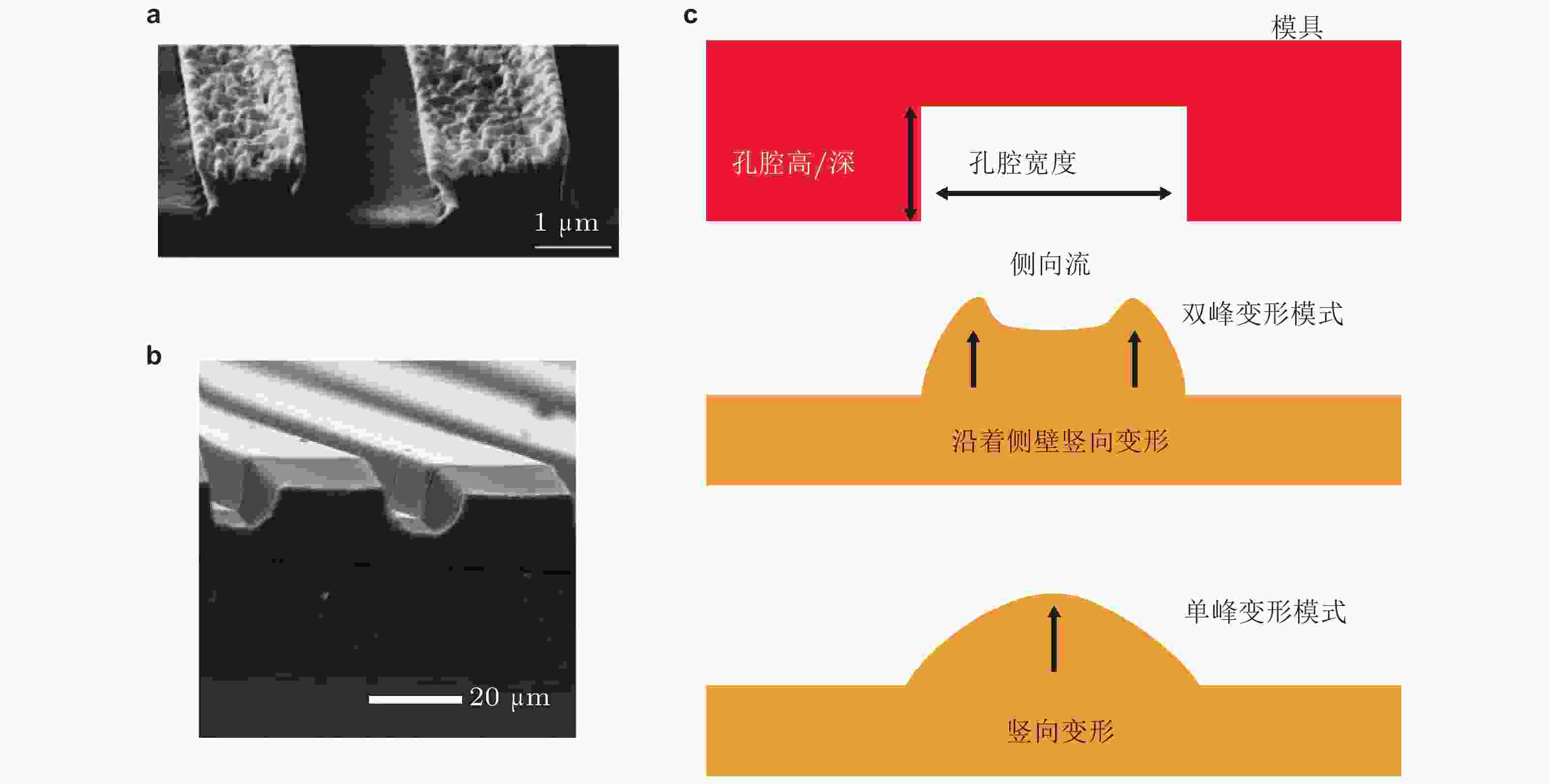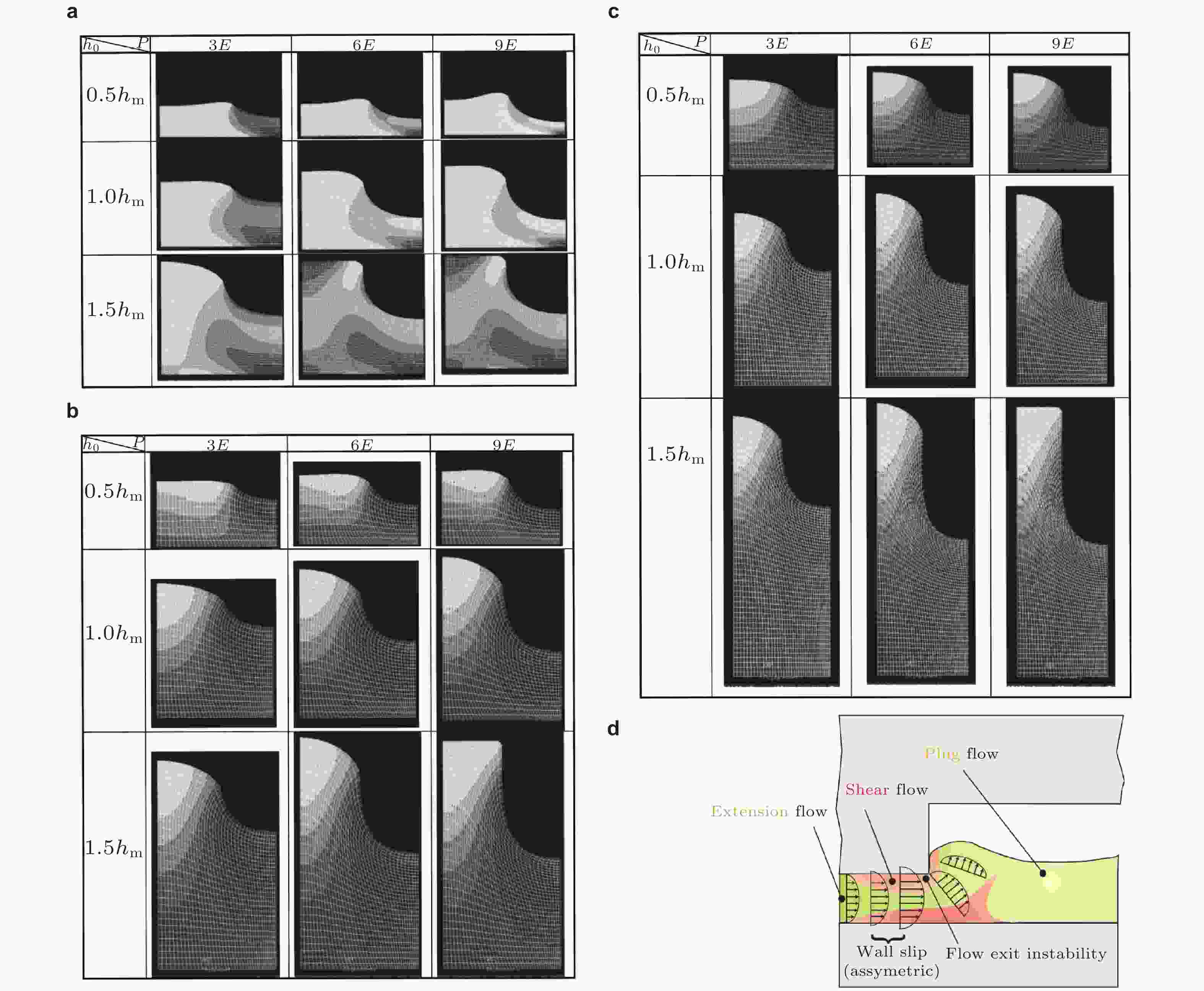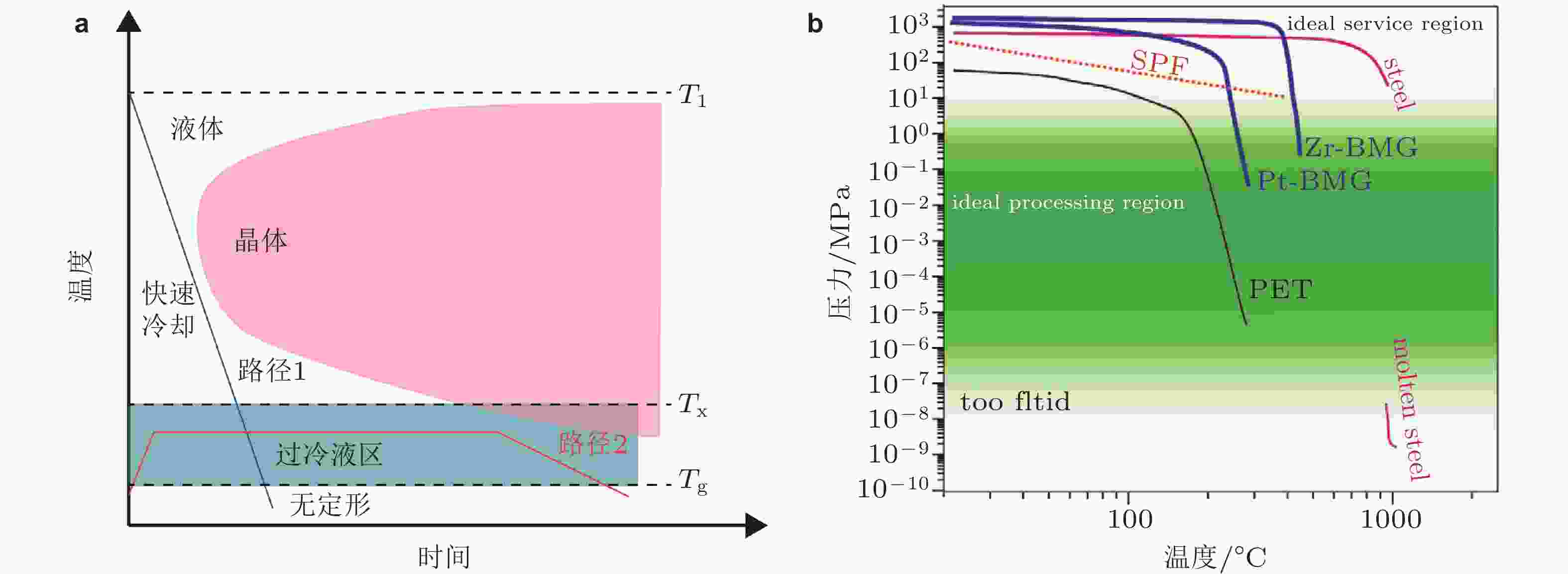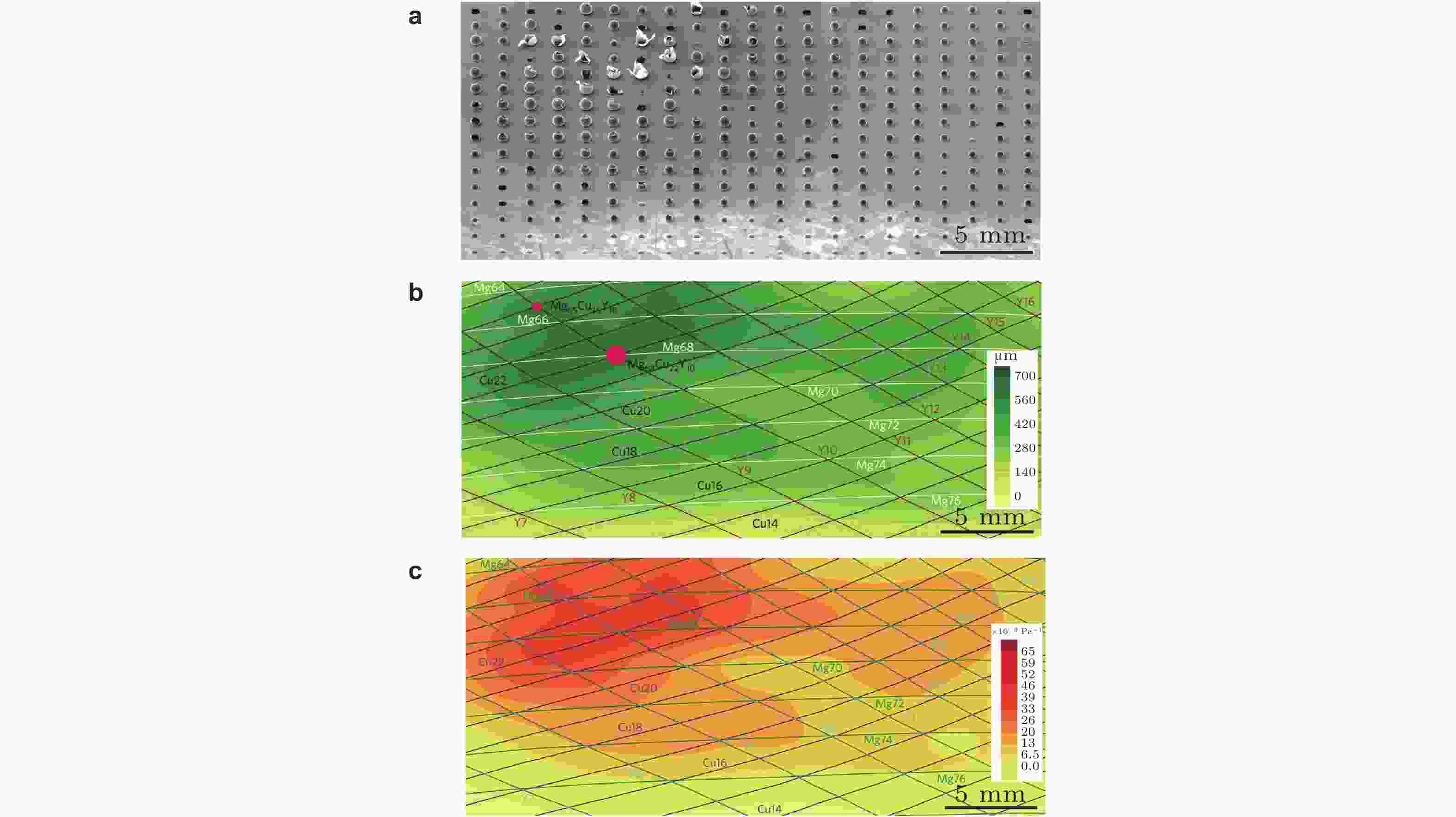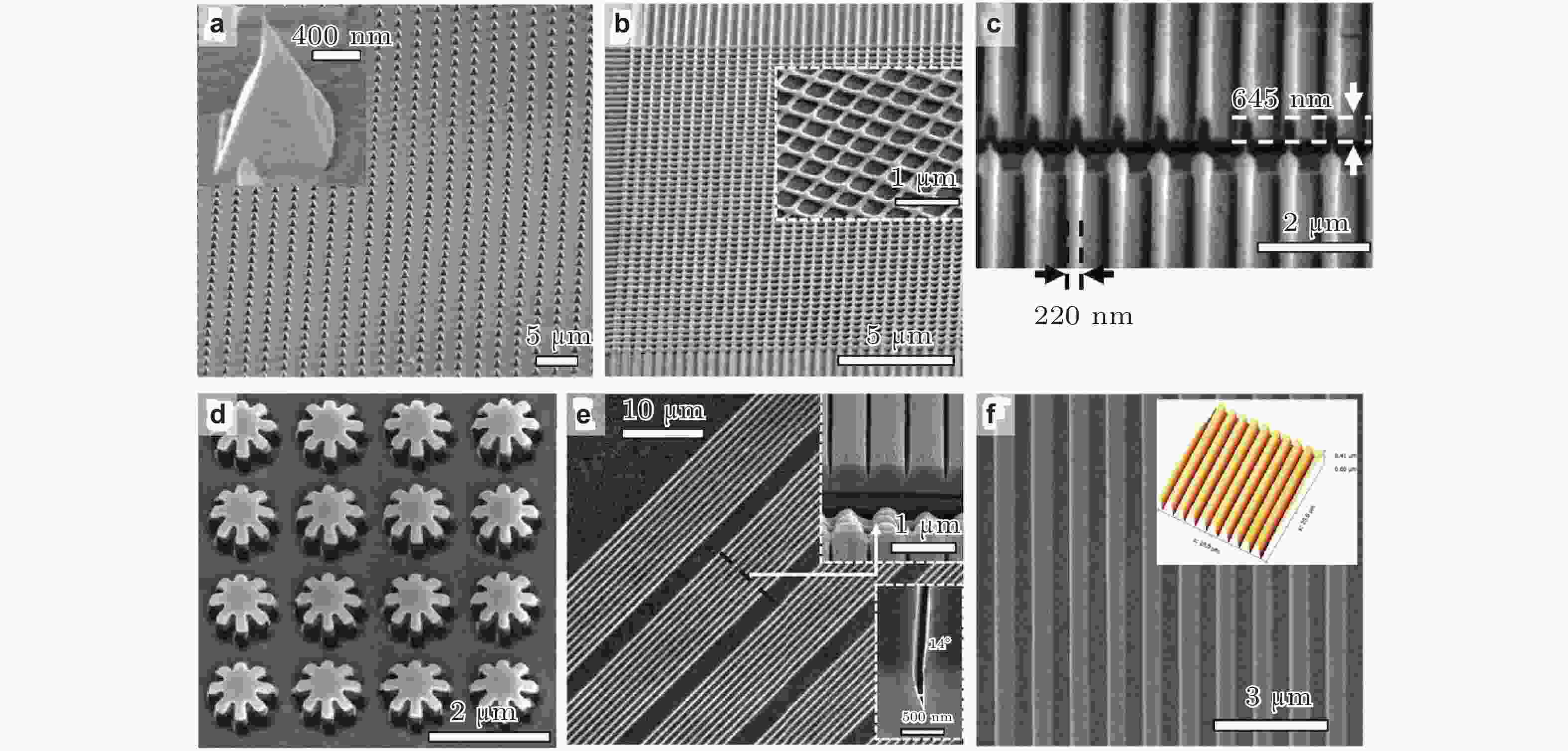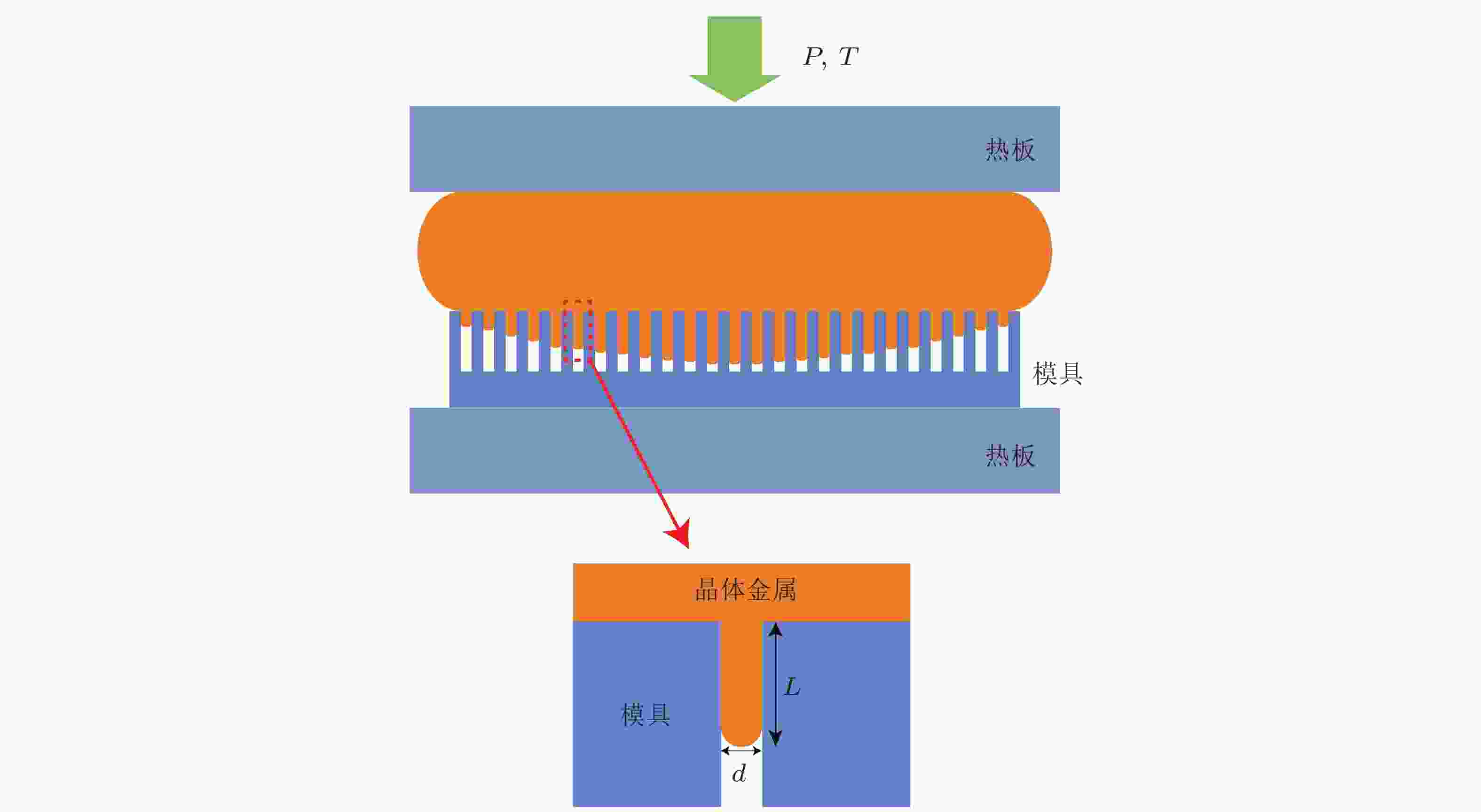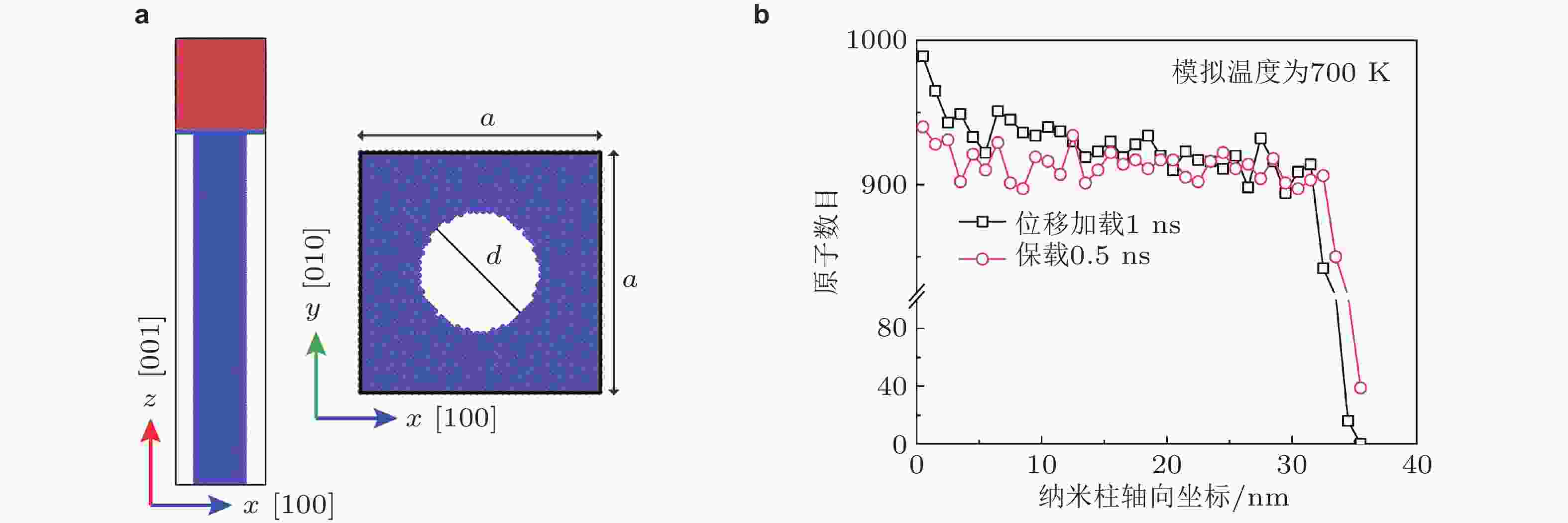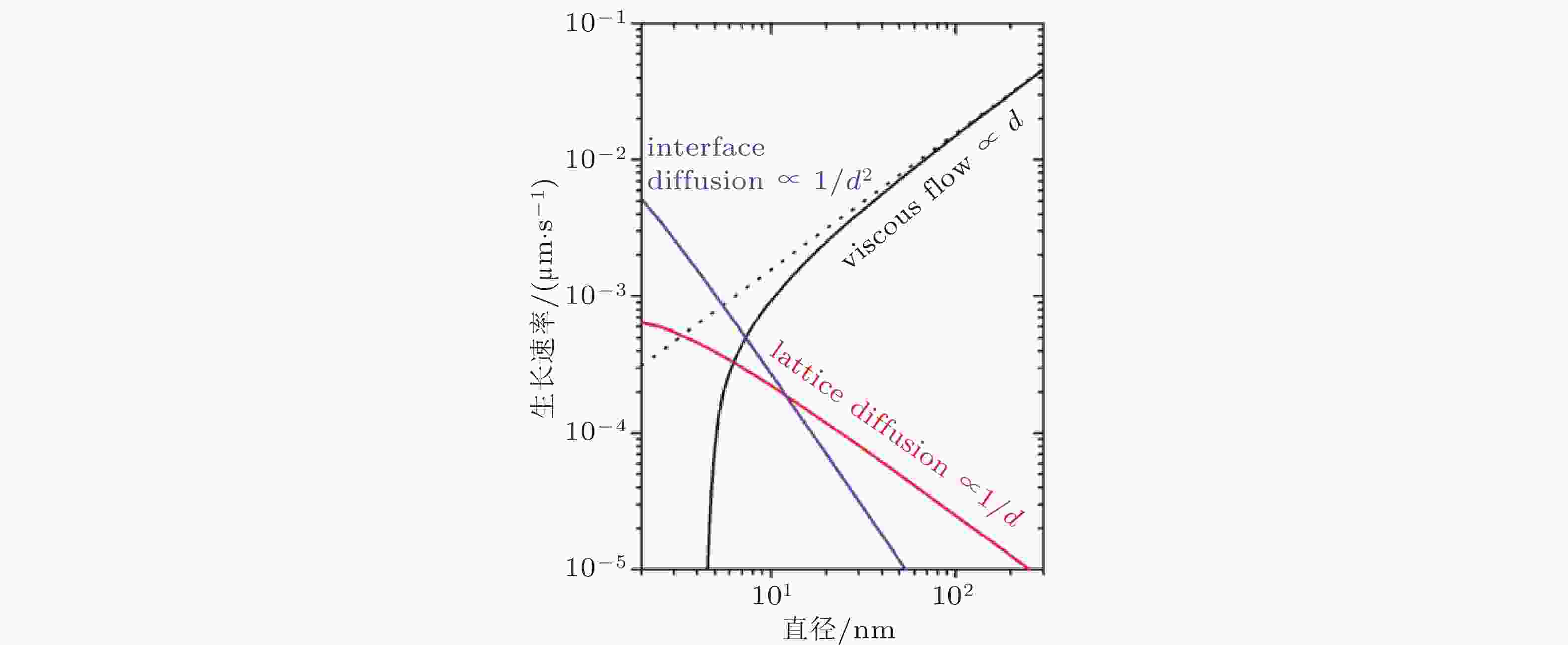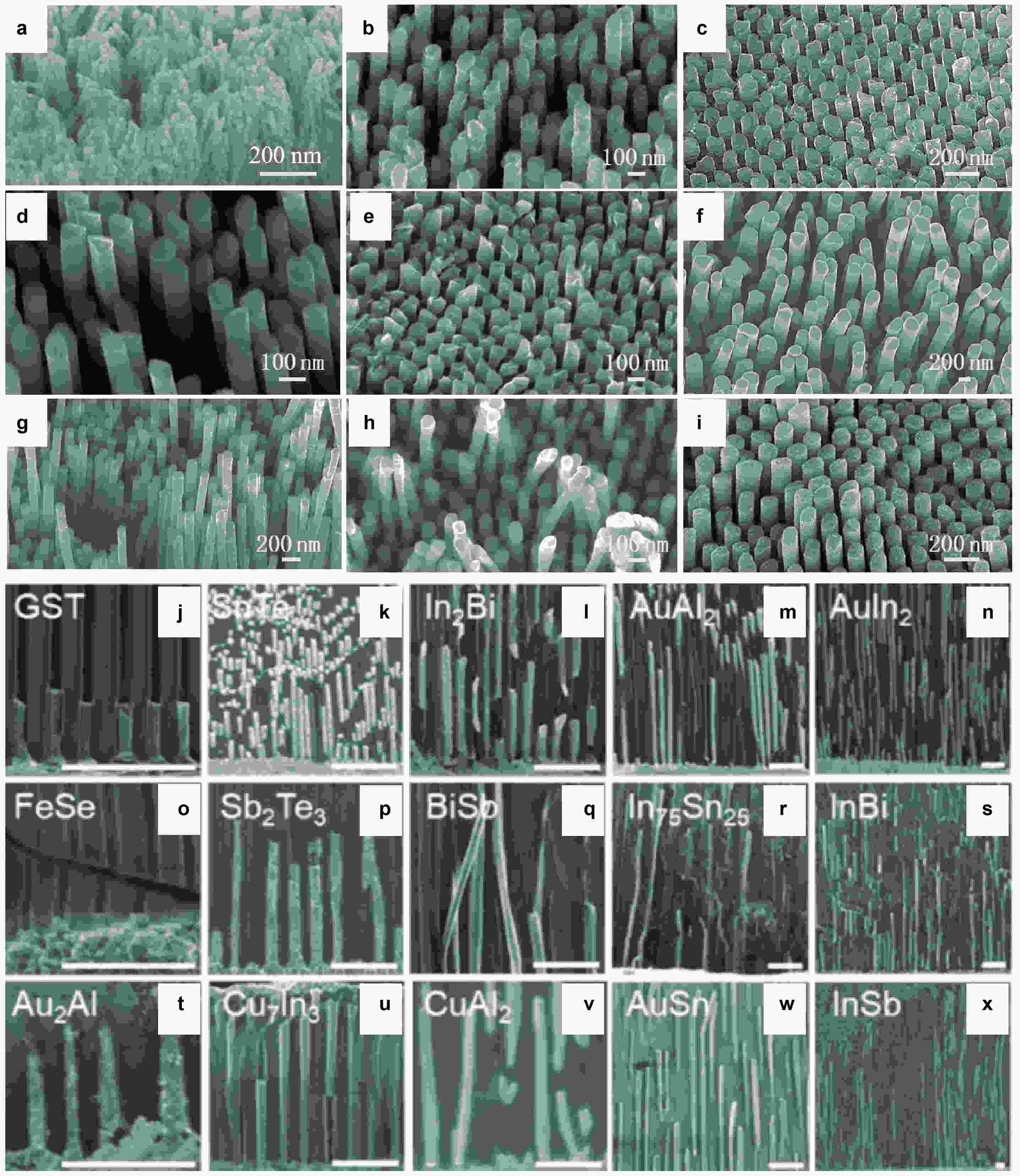-
摘要: 利用材料的塑性变形能力制造各种零部件被广泛应用于汽车、航空航天、消费电子和医疗设备等领域. 随着器件小型化的发展趋势, 开发新的微纳成型 (或微纳尺度塑性变形) 工艺成为制造业发展的核心问题之一. 近年来, 产业界和学术界对微纳成型技术进行了广泛的研究, 在开发微纳成型工艺、深入理解尺寸效应和变形行为等方面都取得了显著进展. 本文将聚焦不同材料体系如聚合物、非晶合金与晶体金属在微纳成型过程中的变形机理及其尺寸效应, 综述微纳成型技术的最新研究进展. 最后, 对金属微纳成型面临的技术挑战及其关键力学问题进行展望.Abstract: Exploiting the plastic deformability of materials to manufacture components is widely applied in automobile, aerospace, consumer electronics, medical equipment, and other fields. With the development trend of device miniaturization, nanofabrication techniques plays a central role in the manufacturing industry. In recent years, extensive research and remarkable progress have been made in developing micro-/nanoforming techniques, and in-depth understanding of the underlying deformation behavior. This paper will review the latest research progress of micro-/nanoforming techniques, focusing on the deformation mechanism and size effect in the micro-/nanoforming of different material classes such as polymers, amorphous alloys/bulk metallic glass, and crystalline metals. Finally, the technical challenges and key mechanical problems of micro-/nanoforming of crystalline metals are prospected.
-
图 1 纳米压印光刻技术. (a) 典型的纳米压印工艺流程示意图 (Chou & Krauss 1997, Chou et al. 1995, Guo 2004): 在一定的压力和温度作用下把表面具有纳米图案的硬模具压入到聚合物 (如PMMA) 表面, 随后降温后使得硬膜具与聚合物脱离 (脱模) , 从而在聚合物表面获得复制的纳米图案, 最后, 应用氧等离子蚀刻去除压痕中的残留聚合物; (b) 聚合物储能模量的温度相关性. 聚合物在其玻璃转变温度Tg以下表现为弹性, 在玻璃转变温度及熔点温度Tm之间表现为黏弹性, 而在Tm以上表现为黏性行为 (Chantiwas et al. 2011)
图 2 聚合物在微米尺度热压成型过程中的变形模式. (a) PMMA和 (b) PDMS表面通过热压印复制的微米结构的SEM图 (Heyderman et al. 2000, Rowland & King 2004); (c) 热压印过程中, 聚合物填充模板孔腔的两种典型变形模式 (Rowland & King 2004)
图 3 (a) ~ (c) 有限元模拟聚合物在微成型过程中流入单一孔腔过程中的截面轮廓和主应力分布, 孔腔的深宽比分别为: (a) 0.5, (b) 1.0和 (c) 1.5. 图中h0 表示聚合物薄膜初始的厚度, hm表示模具孔腔的深度. P 为压印时的压力, E表示聚合物的弹性模量 (Hirai et al. 2001); (d) 宽孔腔入口附近聚合物流动示意图. 压力梯度驱动下的聚合物流动将在入口处同时产生剪切和拉伸流, 在出口处则出现塞流现象 (Cross 2006, Schulz et al. 2006)
图 4 (a) 描述聚合物黏弹性行为的标准线性模型 (左) 和广义麦克斯韦模型 (右) ; (b) 聚合物变形随时间变化的数值模拟结果. 成型压力为1.25 MPa, 保持时间分别为10 s, 30 s和60 s; (c) ~ (f) 热压印COP后的表面SEM图像. 热压印压力为1.25 MPa, 保持时间分别为10 s (c), 30 s (d), 60 s (e) 和120 s (f) (Takagi et al. 2008)
图 5 (a) 金属玻璃的时间-温度-转变示意图. 路径1和2分别给出了金属玻璃浇铸和热塑性成型两种方式. 路径1的成型方式要求快速冷却以避免结晶, 因此成型时间短; 路径2给出的成型过程不需快速冷却, 因此成型时间窗口长 (Schroers 2005, Schroers & Paton 2006); (b) 金属玻璃与不锈钢、可超塑性成型合金以及热塑性树脂的强度与可成型性能比较 (Schroers et al. 2011)
图 6 (a) Pt57.5Cu14.7Ni5.3P22.5金属玻璃微齿轮 (Kumar et al. 2009); (b) 线圈形状微弹簧 (Schroers et al. 2007b); (c) 上图为对Au49Ag5.5Pd2.3Cu26.9Si16.3 金属玻璃粉末进行的热塑性模铸成型, 成型温度和压力分别为150 ℃和100 MPa, 持续时间200 s, 下图为对Pt57.5Cu14.7Ni5.3P22.5金属玻璃粉末在270 ℃和28 MPa压力下进行的热塑性模铸成型, 持续时间100 s (Schroers et al. 2007a); (d) 在压力差105 Pa和温度460 ℃下通过吹塑法制备的Zr44Ti11Cu10Ni10Be25金属玻璃球壳结构, 塑性变形可超过500% (Schroers et al. 2007c)
图 7 应用热吹塑成型实验筛选具有最优成型能力的金属玻璃组分 (Ding et al. 2014). (a) 不同位置处的金属玻璃具有不同的成分, 它们在相同条件下热吹塑后得到不同大小的球壳; (b) 对 (a) 中区域进行成分分析, 然后对比 (a) 图中热吹塑后最大的球壳所在的位置, 获得最优成型性能的金属玻璃成分为Mg68Cu22Y10; (c) 应用方程 (15) 可量化不同成分的金属玻璃的热塑性成型能力, 可知不同位置处各原子的百分比含量仅发生较小的变化, 但热塑性成型能力存在超过一个数量级的差异
图 8 应用纳米压印术制备的 (a) Pt57.5Cu14.7Ni5.3P22.5金属玻璃纳米柱阵列 (Schroers 2010, Schroers et al. 2007b)和 (b) Zr44Ti11Cu10Ni10Be25, Mg65Cu25Y10金属玻璃纳米柱阵列 (Liu & Schroers 2015)
图 9 (a) 应用变孔径硅模板热压成型制备的直径为10 ~ 50 μm的Pt57.5Cu14.7Ni5.3P22.5金属玻璃微米柱; (b) 根据 (a) 图测得微柱的长度和直径的关系 (Schroers 2005, 2010)
图 10 (a) 热压纳米成型Pt57.5Cu14.7Ni5.3P22.5金属玻璃制得的纳米柱长度与直径的关系, 其中红点为实验数据, 黑色点为根据式 (18) 计算得到; (b) 实验数据与理论预测值的偏离源于纳米空间限制下黏性系数的显著增加 (Shao et al. 2013)
图 11 激光冲击压印制备金属纳米结构 (Gao et al. 2014) . (a) (b) Ag 纳米结构; (c) (d) Al 纳米结构; (e) 在Ag表面形成的“V”形沟槽, 其长径比可达5; (f) 钛纳米沟槽结构
图 15 纳米模铸Au过程中临界成型压力与孔道尺寸的关系 (Liu 2019). (a) 成型温度为0.39Tm; (b) 成型温度为0.71Tm
图 16 晶态和非晶态金属在纳米模铸过程的尺寸效应 (Liu et al. 2019), 成型能力通过L/d反映. 图中黑色实心方块和红色五边形点分别为金属玻璃 (Shao et al. 2013) 和块体Au (Liu et al. 2019)的纳米成型实验结果, 品红色实线和蓝色实线分别为考虑表面张力 (γ = 1 N/m, θ = 120°) (Williams et al. 2008) 和不考虑表面张力作用的Hagen−Poiseuille理论预测. 块体Au的纳米模铸条件为在622℃和约800 MPa下成型100 s. 对于金属玻璃, 理论 (品红色实线) 和实验结果 (黑色实心方块) 的偏差源于纳米尺度下黏度的显著增强 (Shao et al. 2013)
图 18 对比纳米成型过程中不同变形机制导致的纳米柱的生长速率 (Liu et al. 2019). 图中扩散主导的变形机制是根据Au在500 ℃下的参数计算得到 (对式 (24) 求导数) , 体扩散和界面扩散分别对应图中红色和紫色曲线) . 作为对比, 基于黏性流动的Pt57.5Cu14.7Ni5.3P22.5金属玻璃纳米柱子的生长速率如图中黑色线条所示 (式 (18) , 成型压力取为500 MPa, 纳米柱的长径比取为5)
图 19 应用超塑性纳米模铸制备各种纳米柱阵列(Liu et al. 2020, 2019). (a) 直径为5 ~ 13 nm的金纳米柱 (面心立方); (b) 镍 (面心立方); (c) 钒 (体心立方); (d) 铁 (体心立方); (e) Ni60Ti40 (形状记忆合金); (f) Ag75Ge25; (g) Cu34.7Zn3.0Sn62.3 (形状记忆合金); (h) PdCuNi; (i) PdCuNiPtRhIr (高熵合金); (j) ~ (x) 各种功能材料纳米线 (比例尺为1 μm), 包含: Ge2Sb2Te5 (GST, 相变材料), FeSe (超导体), Au2Al (有序相), SnTe (拓扑绝缘体), Sb2Te3 (拓扑绝缘体), Cu7In3, In2Bi, BiSb (拓扑绝缘体), CuAl2, AuAl2 (彩色材料), In75Sn25 (电子焊料), AuSn, AuIn2 (超导体), InBi和InSb (半导体).
-
[1] 刘泽. 2018. 先进微制造力学. 固体力学学报, 39: 223-247 [2] 曲绍兴, 周昊飞. 2014. 新型纳米结构金属材料的力学性能及变形机制. 力学进展, 44: 201409 doi: 10.6052/1000-0992-14-046 [3] 吴艳青, 施惠基, 牛莉莎. 2005. 超塑性变形晶界效应研究综述. 力学进展, 35: 525-540 doi: 10.6052/1000-0992-2005-4-J2004-073 [4] Ashby M F. 1972. A first report on deformation-mechanism maps. Acta Metallurgica, 20: 887-897. doi: 10.1016/0001-6160(72)90082-X [5] Bruinink C M, Péter M, Maury P A, de Boer M, Kuipers L, Huskens J, Reinhoudt D N. 2006. Capillary force lithography: Fabrication of functional polymer templates as versatile tools for nanolithography. Advanced Functional Materials, 16: 1555-1565. doi: 10.1002/adfm.200500629 [6] Buzzi S, Robin F, Callegari V, Löffler J F. 2008. Metal direct nanoimprinting for photonics. Microelectronic Engineering, 85: 419-424. doi: 10.1016/j.mee.2007.08.001 [7] Chantiwas R, Park S, Soper S A, Kim B C, Takayama S, Sunkara V, Hwang H, Cho Y K. 2011. Flexible fabrication and applications of polymer nanochannels and nanoslits. Chemical Society Reviews, 40: 3677-3702. doi: 10.1039/c0cs00138d [8] Chao C Y, Guo L J. 2004. Thermal-flow technique for reducing surface roughness and controlling gap size in polymer microring resonators. Applied Physics Letters, 84: 2479-2481. doi: 10.1063/1.1691492 [9] Chou S Y, Krauss P R. 1997. Imprint lithography with sub-10 nm feature size and high throughput. Microelectronic Engineering, 35: 237-240. doi: 10.1016/S0167-9317(96)00097-4 [10] Chou S Y, Krauss P R, Renstrom P J. 1995. Imprint of sub-25 nm vias and trenches in polymers. Applied Physics Letters, 67: 3114-3116. doi: 10.1063/1.114851 [11] Chou S Y, Krauss P R, Renstrom P J. 1996. Imprint lithography with 25-nanometer resolution. Science, 272: 85-87. doi: 10.1126/science.272.5258.85 [12] Chou S Y, Xia Q. 2008. Improved nanofabrication through guided transient liquefaction. Nature Nanotechnology, 3: 295-300. doi: 10.1038/nnano.2008.95 [13] Coble R L. 1963. A model for boundary diffusion controlled creep in polycrystalline materials. Journal of Applied Physics, 34: 1679-1682. doi: 10.1063/1.1702656 [14] Cross, G L W. 2006. The production of nanostructures by mechanical forming. Journal of Physics D:Applied Physics, 39: R363-R386. doi: 10.1088/0022-3727/39/20/R01 [15] Cross, G L W, Connell B O, Pethica J B, Oliver W. 2003. Mechanical aspects of nanoimprint patterning. 2003 Third IEEE Conference on Nanotechnology, IEEE-NANO, 492: 494-497. [16] Csikor F F, Motz C, Weygand D, Zaiser M, Zapperi S. 2007. Dislocation avalanches, strain bursts, and the problem of plastic forming at the micrometer scale. Science, 318: 251-254. doi: 10.1126/science.1143719 [17] Cui B, Keimel C, Chou S Y. 2009. Ultrafast direct imprinting of nanostructures in metals by pulsed laser melting. Nanotechnology, 21: 045303. [18] Debenedetti P G, Stillinger F H. 2001. Supercooled liquids and the glass transition. Nature, 410: 259-267. doi: 10.1038/35065704 [19] Ding S, Liu Y, Li Y, Liu Z, Sohn S, Walker F J, Schroers J. 2014. Combinatorial development of bulk metallic glasses. Nature Materials, 13: 494-500. doi: 10.1038/nmat3939 [20] Ding Y, Ro H W, Douglas J F, Jones R L, Hine D R, Karim A, Soles C L. 2007. Polymer viscoelasticity and residual stress effects on nanoimprint lithography. Advanced Materials, 19: 1377-1382. doi: 10.1002/adma.200601998 [21] Engel U, Eckstein R. 2002. Microforming—from basic research to its realization. Journal of Materials Processing Technology, 9: 35-44. [22] Frost H J, Ashby M F. 1982. Deformation Mechanism Maps: The Plasticity and Creep of Metals and Ceramics. Oxford, UK: Pergamon Press [23] Fu M W, Chan W L. 2013. A review on the state-of-the-art microforming technologies. The International Journal of Advanced Manufacturing Technology, 67: 2411-2437. doi: 10.1007/s00170-012-4661-7 [24] Gao H, Hu Y, Xuan Y, Li J, Yang Y, Martinez R V, Li C, Luo J, Qi M, Cheng G J. 2014. Large-scale nanoshaping of ultrasmooth 3D crystalline metallic structures. Science, 346: 1352-1356. doi: 10.1126/science.1260139 [25] Ge J, Ding B, Hou S, Luo M, Nam D, Duan H, Gao H, Lam, Y C, Li H. 2021. Rapid fabrication of complex nanostructures using room-temperature ultrasonic nanoimprinting. Nature Communications, 12: 3146. doi: 10.1038/s41467-021-23427-y [26] Greer J R, De Hosson J T M. 2011. Plasticity in small-sized metallic systems: Intrinsic versus extrinsic size effect. Progress in Materials Science, 56: 654-724. doi: 10.1016/j.pmatsci.2011.01.005 [27] Guo L J. 2004. Recent progress in nanoimprint technology and its applications. Journal of Physics D:Applied Physics, 37: R123-R141. doi: 10.1088/0022-3727/37/11/R01 [28] Han Q, Yi X. 2021. A unified mechanistic model for Hall–Petch and inverse Hall–Petch relations of nanocrystalline metals based on intragranular dislocation storage. Journal of the Mechanics and Physics of Solids, 154: 104530. doi: 10.1016/j.jmps.2021.104530 [29] Herring C. 1950. Diffusional viscosity of a polycrystalline solid. Journal of Applied Physics, 21: 437-445. doi: 10.1063/1.1699681 [30] Heyderman L J, Schift H, David C, Gobrecht J, Schweizer T. 2000. Flow behaviour of thin polymer films used for hot embossing lithography. Microelectronic Engineering, 54: 229-245. doi: 10.1016/S0167-9317(00)00414-7 [31] Hirai Y, Fujiwara M, Okuno T, Tanaka Y, Endo M, Irie S, Nakagawa K, Sasago M. 2001. Study of the resist deformation in nanoimprint lithography. Journal of Vacuum Science & Technology B:Microelectronics and Nanometer Structures Processing, Measurement, and Phenomena, 19: 2811-2815. [32] Hirai Y, Konishi T, Yoshikawa T, Yoshida S. 2004. Simulation and experimental study of polymer deformation in nanoimprint lithography. Journal of Vacuum Science & Technology B: Microelectronics and Nanometer Structures Processing, Measurement, and Phenomena, 22: 3288-3293. [33] Hou C, Li Z, Huang M, Ouyang C. 2009. Cyclic hardening behavior of polycrystals with penetrable grain boundaries: Two-dimensional discrete dislocation dynamics simulation. Acta Mechanica Solida Sinica, 22: 295-306. doi: 10.1016/S0894-9166(09)60278-0 [34] Hsu Q C, Wu C D, Fang T H. 2005. Studies on nanoimprint process parameters of copper by molecular dynamics analysis. Computational Materials Science, 34: 314-322. doi: 10.1016/j.commatsci.2005.01.004 [35] Huang Y J, Shen J, Sun J F. 2007. Bulk metallic glasses: Smaller is softer. Applied Physics Letters, 90: 081919. doi: 10.1063/1.2696502 [36] Jeong J H., Choi Y S, Shin Y J, Lee J J, Park K T, Lee E S, Lee S R. 2002. Flow behavior at the embossing stage of nanoimprint lithography. Fibers and Polymers, 3: 113. doi: 10.1007/BF02892627 [37] Jones R L, Hu T, Soles C L, Lin E K, Reano R M, Pang S W, Casa D M. 2006. Real-time shape evolution of nanoimprinted polymer structures during thermal annealing. Nano Letters, 6: 1723-1728. doi: 10.1021/nl061086i [38] Juang Y J, Lee L J, Koelling K W. 2002. Hot embossing in microfabrication. Part II: Rheological characterization and process analysis. Polymer Engineering & Science, 42: 551-566. [39] Kawamura Y, Kato H, Inoue A, Masumoto T. 1995. Full strength compacts by extrusion of glassy metal powder at the supercooled liquid state. Applied Physics Letters, 67: 2008-2010. doi: 10.1063/1.114769 [40] Kim D, Lu W. 2006. Creep flow, diffusion, and electromigration in small scale interconnects. Journal of the Mechanics and Physics of Solids, 54: 2554-2568. doi: 10.1016/j.jmps.2006.06.001 [41] Kumar G, Desai A, Schroers J. 2011. Bulk metallic glass: The smaller the better. Advanced Materials, 23: 461-476. doi: 10.1002/adma.201002148 [42] Kumar G, Schroers J. 2008. Write and erase mechanisms for bulk metallic glass. Applied Physics Letters, 92: 031901. doi: 10.1063/1.2834712 [43] Kumar G, Staffier P A, Blawzdziewicz J, Schwarz U D, Schroers J. 2010. Atomically smooth surfaces through thermoplastic forming of metallic glass. Applied Physics Letters, 97: 101907. doi: 10.1063/1.3485298 [44] Kumar G, Tang H X, Schroers J, 2009. Nanomoulding with amorphous metals. Nature, 457: 868-872. [45] Langdon T G. 1970. Grain boundary sliding as a deformation mechanism during creep. The Philosophical Magazine:A Journal of Theoretical Experimental and Applied Physics, 22: 689-700. doi: 10.1080/14786437008220939 [46] Li N, Chen Y, Jiang M Q, Li D J, He J J, Wu Y, Liu L. 2013. A thermoplastic forming map of a Zr-based bulk metallic glass. Acta Materialia, 61: 1921-1931. doi: 10.1016/j.actamat.2012.12.013 [47] Li Z, Huang Z, Sun F, Li X, Ma J. 2020. Forming of metallic glasses: Mechanisms and processes. Materials Today Advances, 7: 100077. doi: 10.1016/j.mtadv.2020.100077 [48] Liu N, Xie Y, Liu G, Sohn S, Raj A, Han G, Wu B, Cha J J, Liu Z, Schroers J. 2020. General nanomolding of ordered phases. Physical Review Letters, 124: 036102. doi: 10.1103/PhysRevLett.124.036102 [49] Liu Z. 2017. One-step fabrication of crystalline metal nanostructures by direct nanoimprinting below melting temperatures. Nature Communications, 8. [50] Liu Z. 2019. Investigation of temperature and feature size effects on deformation of metals by superplastic nanomolding. Physical Review Letters, 122: 016101. doi: 10.1103/PhysRevLett.122.016101 [51] Liu Z, Han G, Sohn S, Liu N, Schroers J. 2019. Nanomolding of crystalline metals: The smaller the easier. Physical Review Letters, 122: 036101. doi: 10.1103/PhysRevLett.122.036101 [52] Liu Z, Schroers J. 2015. General nanomoulding with bulk metallic glasses. Nanotechnology, 26: 145301. doi: 10.1088/0957-4484/26/14/145301 [53] Ma J, Liang X, Wu X, Liu Z, Gong F. 2015. Sub-second thermoplastic forming of bulk metallic glasses by ultrasonic beating. Scientific Reports, 5: 17844. doi: 10.1038/srep17844 [54] Martinez R, Kumar, G, Schroers J. 2008. Hot rolling of bulk metallic glass in its supercooled liquid region. Scripta Materialia, 59: 187-190. doi: 10.1016/j.scriptamat.2008.03.008 [55] Mukherjee A K, Bird J E, Dorn J E. 1969. Experimental correlations for high-temperature creep. Trans. American Society for Metals 62: 155-179. [56] Nishiyama N, Inoue A. 1999. Glass transition behavior and viscous flow working of Pd40Cu30Ni10P20 amorphous alloy. Materials Transactions, JIM, 40: 64-71. doi: 10.2320/matertrans1989.40.64 [57] Packard C E, Schroers J, Schuh C A. 2009. In situ measurements of surface tension-driven shape recovery in a metallic glass. Scripta Materialia, 60: 1145-1148. doi: 10.1016/j.scriptamat.2009.02.056 [58] Patterson J P, Jones D R H. 1978. Moulding of a metallic glass. Materials Research Bulletin, 13: 583-585. doi: 10.1016/0025-5408(78)90182-4 [59] Pei Q X, Lu C, Liu Z S, Lam K Y, 2007. Molecular dynamics study on the nanoimprint of copper. Journal of Physics D: Applied Physics, 40: 4928-4935. [60] Raj S V, Langdon T G. 1989. Creep behavior of copper at intermediate temperatures—I. Mechanical characteristics. Acta Metallurgica, 37: 843-852. doi: 10.1016/0001-6160(89)90011-4 [61] Rowland H D, King W P. 2004. Polymer deformation and filling modes during microembossing. Journal of Micromechanics and Microengineering, 14: 1625-1632. doi: 10.1088/0960-1317/14/12/005 [62] Rowland H D, King W P, Pethica J B, Cross G L W. 2008. Molecular confinement accelerates deformation of entangled polymers during squeeze flow. Science, 322: 720-724. doi: 10.1126/science.1157945 [63] Rowland H D, Sun A C, Schunk P R, King W P. 2005. Impact of polymer film thickness and cavity size on polymer flow during embossing: toward process design rules for nanoimprint lithography. Journal of Micromechanics and Microengineering, 15: 2414-2425. doi: 10.1088/0960-1317/15/12/025 [64] Saotome Y, Zhang T, Inoue A. 1998. Microforming of mems parts with amorphous alloys. MRS Proceedings, 554: 385. doi: 10.1557/PROC-554-385 [65] Schall P, Cohen I, Weitz D A, Spaepen F. 2006. Visualizing dislocation nucleation by indenting colloidal crystals. Nature, 440: 319-323. doi: 10.1038/nature04557 [66] Scheer H C, Schulz H. 2001. A contribution to the flow behaviour of thin polymer films during hot embossing lithography. Microelectronic Engineering, 56: 311-332. doi: 10.1016/S0167-9317(01)00569-X [67] Schroers J. 2005. The superplastic forming of bulk metallic glasses. JOM, 57: 35-39. [68] Schroers J. 2008. On the formability of bulk metallic glass in its supercooled liquid state. Acta Materialia, 56: 471-478. doi: 10.1016/j.actamat.2007.10.008 [69] Schroers J. 2010. Processing of bulk metallic glass. Advanced Materials, 22: 1566-1597. doi: 10.1002/adma.200902776 [70] Schroers J, Hodges T M, Kumar G, Raman H, Barnes A J, Pham Q, Waniuk T A. 2011. Thermoplastic blow molding of metals. Materials Today, 14: 14-19. doi: 10.1016/S1369-7021(11)70018-9 [71] Schroers J, Lohwongwatana B, Johnson W L, Peker A. 2007a. Precious bulk metallic glasses for jewelry applications. Materials Science and Engineering:A, 449-451: 235-238. doi: 10.1016/j.msea.2006.02.301 [72] Schroers J, Paton N. 2006. Amorphous metalalloys. Advanced Materials & Processes, 164: 61-63. [73] Schroers J, Pham Q, Desai A. 2007b. Thermoplastic forming of bulk metallic glass—A technology for MEMS and microstructure fabrication. Journal of Microelectromechanical Systems, 16: 240-247. doi: 10.1109/JMEMS.0007.892889 [74] Schroers J, Pham Q, Peker A, Paton N, Curtis R V. 2007c. Blow molding of bulk metallic glass. Scripta Materialia, 57: 341-344. doi: 10.1016/j.scriptamat.2007.04.033 [75] Schroers J, Veazey C, Demetriou M D, Johnson W L. 2004. Synthesis method for amorphous metallic foam. Journal of Applied Physics, 96: 7723-7730. doi: 10.1063/1.1818355 [76] Schulz, H, Wissen M, Bogdanski N, Scheer H C, Mattes K, Friedrich C. 2006. Impact of molecular weight of polymers and shear rate effects for nanoimprint lithography. Microelectronic Engineering 83: 259-280. [77] Shao Z, Gopinadhan M, Kumar G, Mukherjee S, Liu Y, O'Hern C S, Schroers J, Osuji C O. 2013. Size-dependent viscosity in the super-cooled liquid state of a bulk metallic glass. Applied Physics Letters, 102: 221901. doi: 10.1063/1.4808342 [78] Soejima H, Nishiyama N, Takehisa H, Shimanuki M, Inoue A. 2005. Viscous flow forming of Zr-based bulk metallic glasses for industrial products. Journal of Metastable and Nanocrystalline Materials, 24-25: 531-534. doi: 10.4028/www.scientific.net/JMNM.24-25.531 [79] Sordelet D J, Rozhkova E, Huang P, Wheelock P B, Besser M F, Kramer M J, Calvo-Dahlborg M, Dahlborg U. 2002. Synthesis of Cu47Ti34Zr11Ni8bulk metallic glass by warm extrusion of gas atomized powders. Journal of Materials Research, 17: 186-198. doi: 10.1557/JMR.2002.0028 [80] Stoykovich M P, Cao H B, Yoshimoto K, Ocola L E, Nealey P F. 2003. Deformation of nanoscopic polymer structures in response to well-defined capillary forces. Advanced Materials, 15: 1180-1184. doi: 10.1002/adma.200305059 [81] Suh K Y, Kim Y S, Lee H H. 2001. Capillary force lithography. Advanced Materials, 13: 1386-1389. doi: 10.1002/1521-4095(200109)13:18<1386::AID-ADMA1386>3.0.CO;2-X [82] Suh K Y, Lee H H. 2002. Capillary force lithography: Large-area patterning, self-organization, and anisotropic dewetting. Advanced Functional Materials, 12: 405-413. doi: 10.1002/1616-3028(20020618)12:6/7<405::AID-ADFM405>3.0.CO;2-1 [83] Takagi H, Takahashi M, Maeda R, Onishi Y, Iriye Y, Iwasaki T, Hirai Y. 2008. Analysis of time dependent polymer deformation based on a viscoelastic model in thermal imprint process. Microelectronic Engineering, 85: 902-906. doi: 10.1016/j.mee.2008.01.018 [84] Telford M. 2004. The case for bulk metallic glass. Materials today, 7: 36-43. [85] Uchic M D, Dimiduk D M, Florando J N, Nix W D. 2004. Sample dimensions influence strength and crystal plasticity. Science, 305: 986-989. doi: 10.1126/science.1098993 [86] Vollertsen F, Hu Z, Schulze Niehoff H, Theiler C. 2004. State of the art in micro forming and investigations into micro deep drawing. Journal of Materials Processing Technology, 151: 70-79. doi: 10.1016/j.jmatprotec.2004.04.266 [87] Vollertsen F, Schulze Niehoff H, Hu Z. 2006. State of the art in micro forming. International Journal of Machine Tools and Manufacture, 46: 1172-1179. doi: 10.1016/j.ijmachtools.2006.01.033 [88] Voronov R S, Papavassiliou D V, Lee L L. 2006. Boundary slip and wetting properties of interfaces: Correlation of the contact angle with the slip length. The Journal of Chemical Physics, 124: 204701. doi: 10.1063/1.2194019 [89] Wei Y, Bower A F, Gao H. 2008. Recoverable creep deformation and transient local stress concentration due to heterogeneous grain-boundary diffusion and sliding in polycrystalline solids. Journal of the Mechanics and Physics of Solids, 56: 1460-1483. doi: 10.1016/j.jmps.2007.08.007 [90] Williams M L, Landel R F, Ferry J D. 1955. The temperature dependence of relaxation mechanisms in amorphous polymers and other glass-forming liquids. Journal of the American Chemical society, 77: 3701-3707. doi: 10.1021/ja01619a008 [91] Williams S S, Hampton M J, Gowrishankar V, Ding I K, Templeton J L, Samulski E T, DeSimone J M, McGehee M D. 2008. Nanostructured titania−polymer photovoltaic devices made using PFPE-based nanomolding techniques. Chemistry of Materials, 20: 5229-5234. doi: 10.1021/cm800729q [92] Wu X L, Liao X Z, Srinivasan S G, Zhou F, Lavernia E J, Valiev R Z, Zhu Y T. 2008. New deformation twinning mechanism generates zero macroscopic strain in nanocrystalline metals. Physical Review Letters, 100: 095701. doi: 10.1103/PhysRevLett.100.095701 [93] Xu L, Shui L, Zhang Y, Peng Q, Xue L, Liu Z. 2020. Robust and reproducible fabrication of large area aluminum (Al) micro/nanorods arrays by superplastic nanomolding at room temperature. Applied Physics Express, 13: 036503. doi: 10.35848/1882-0786/ab75b3 [94] Yamakov V, Wolf D, Salazar M, Phillpot S R, Gleiter H. 2001. Length-scale effects in the nucleation of extended dislocations in nanocrystalline Al by molecular-dynamics simulation. Acta Materialia, 49: 2713-2722. doi: 10.1016/S1359-6454(01)00167-7 [95] Zhang Y, Wu B, Gao E, Shui L, Liu Z. 2021. Observation of speeding growth of metal nanowires by ultra-low frequency micro-vibration assisted superplastic nanomolding. Materials Letters, 283: 128890. doi: 10.1016/j.matlet.2020.128890 [96] Zhao X M, Xia Y, Whitesides G M. 1997. Soft lithographic methods for nano-fabrication. Journal of Materials Chemistry, 7: 1069-1074. doi: 10.1039/a700145b [97] Zhu T, Gao H. 2012. Plastic deformation mechanism in nanotwinned metals: An insight from molecular dynamics and mechanistic modeling. Scripta Materialia, 66: 843-848. doi: 10.1016/j.scriptamat.2012.01.031 [98] Zhu T, Li J, Samanta A, Leach A, Gall K. 2008. Temperature and strain-rate dependence of surface dislocation nucleation. Physical Review Letters, 100: 025502. doi: 10.1103/PhysRevLett.100.025502 [99] Zhu Y T, Liao X Z, Wu X L, Narayan J. 2013. Grain size effect on deformation twinning and detwinning. Journal of Materials Science, 48: 4467-4475. doi: 10.1007/s10853-013-7140-0 -





 下载:
下载:
